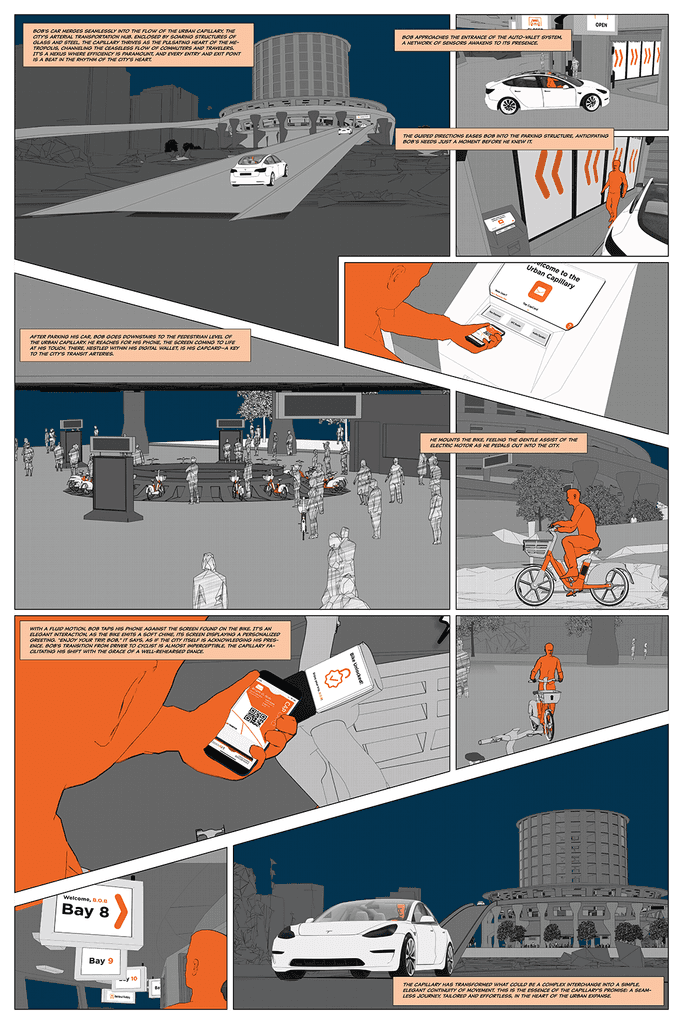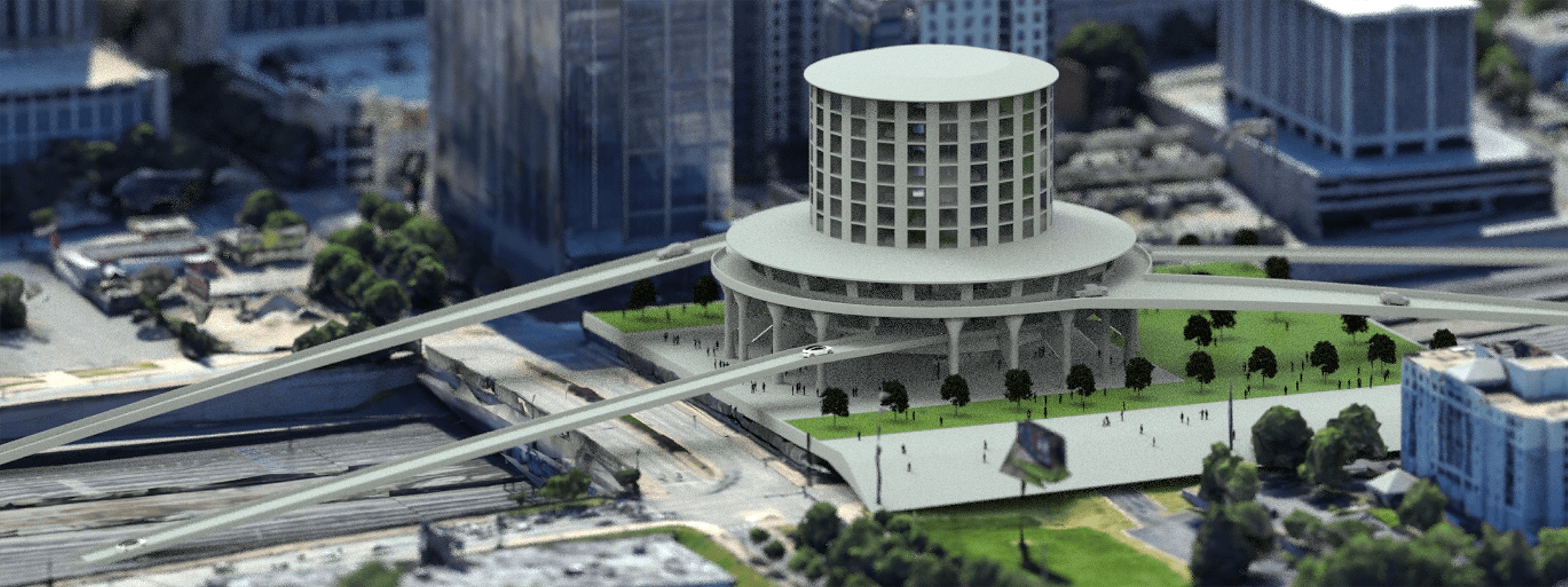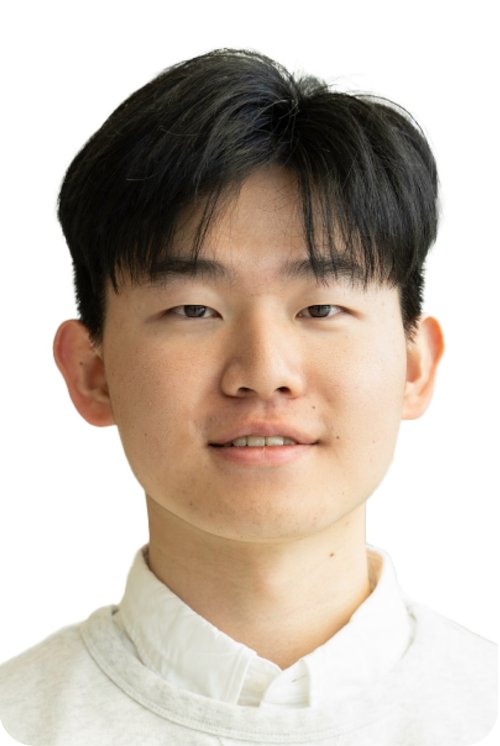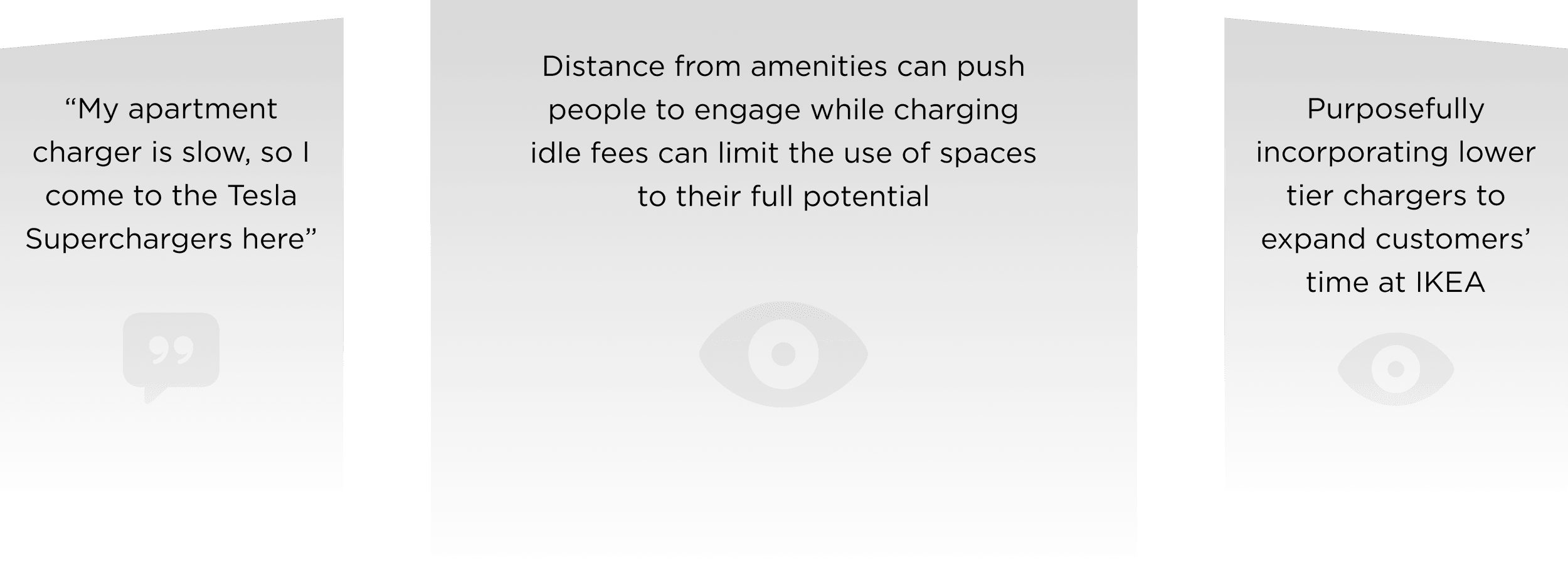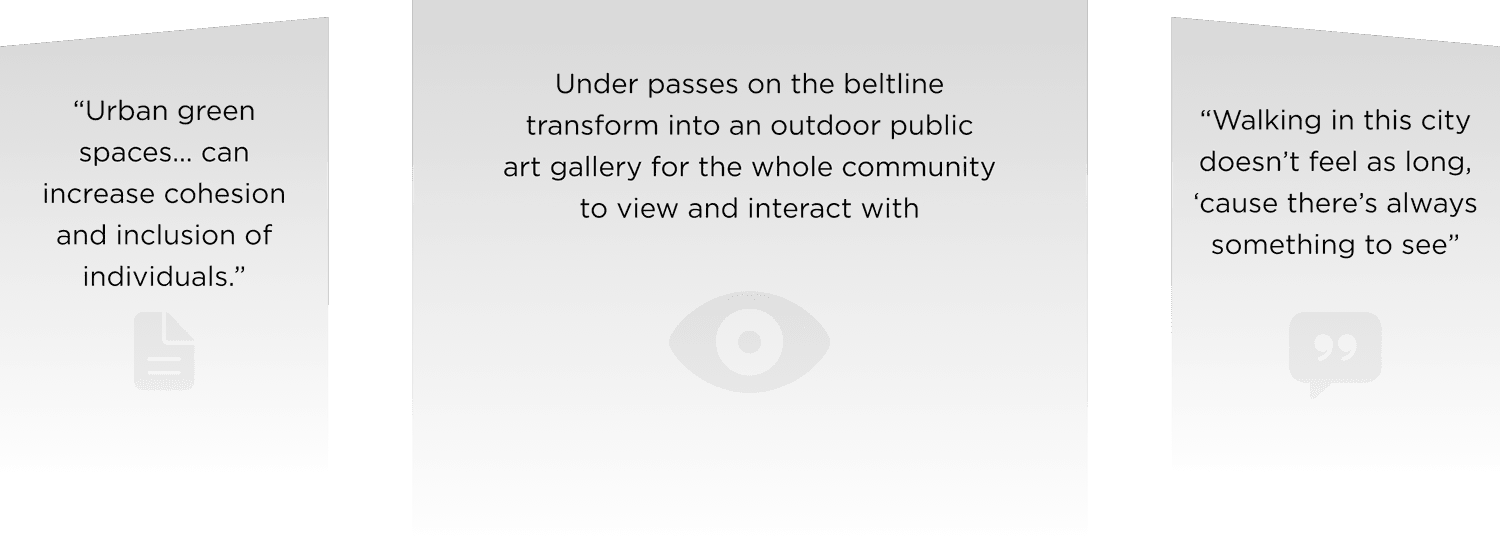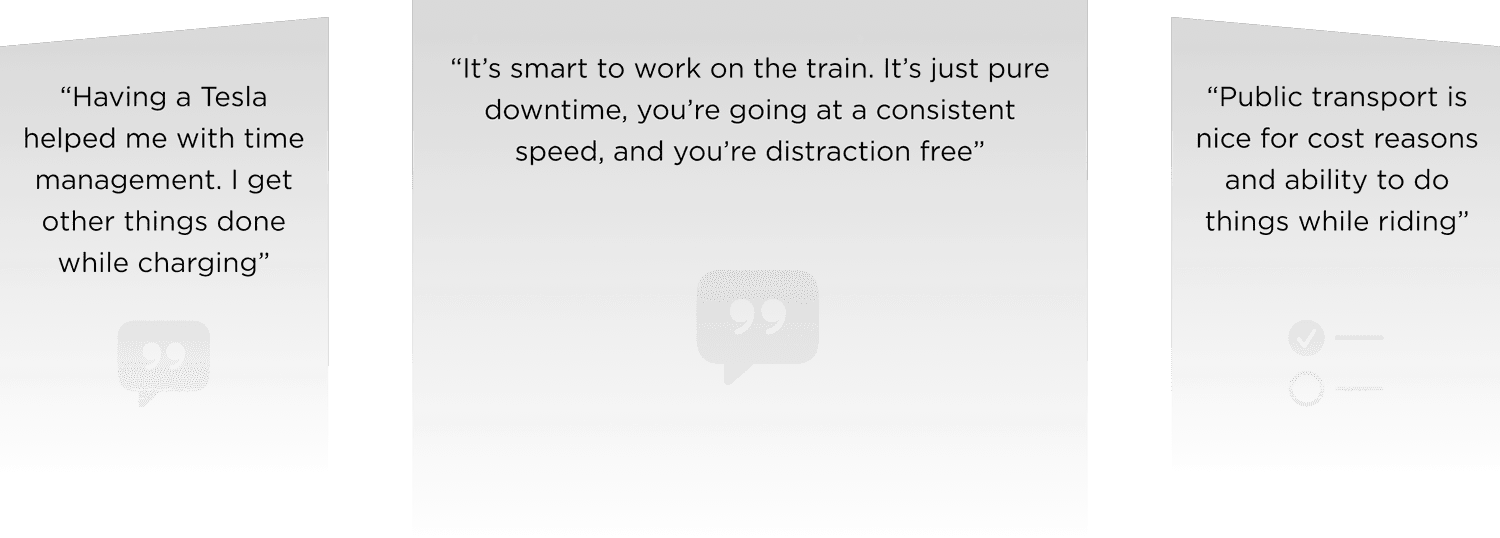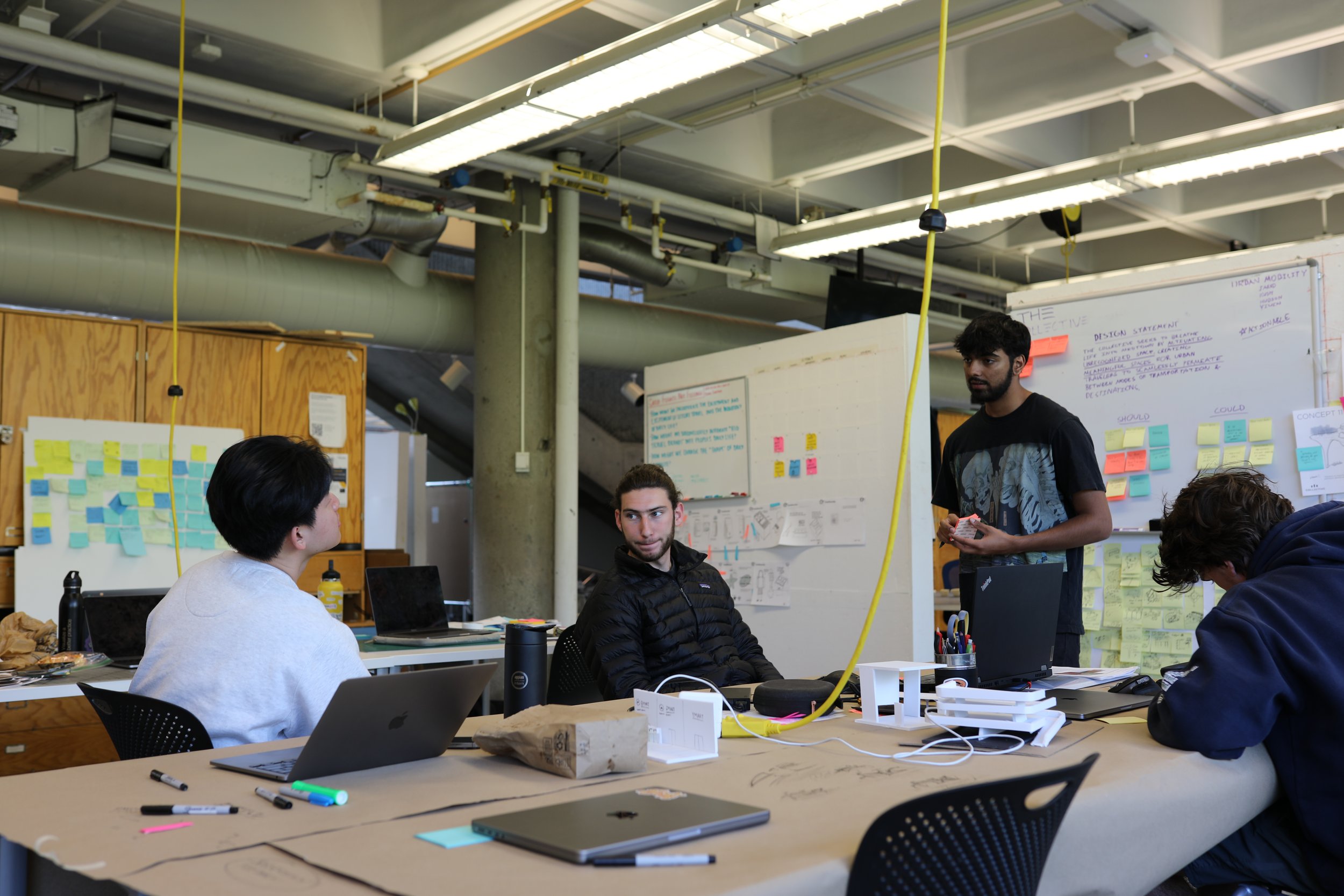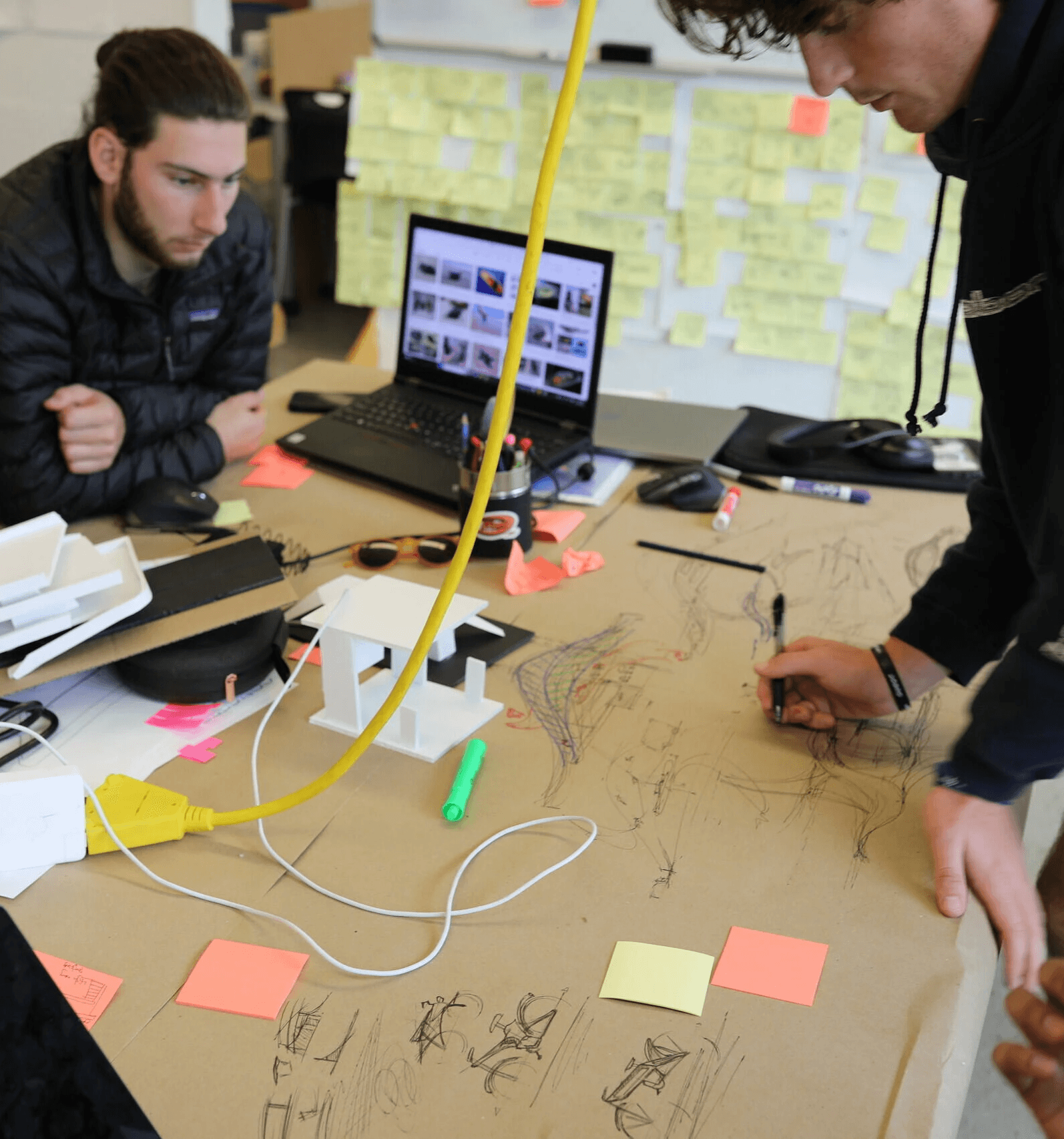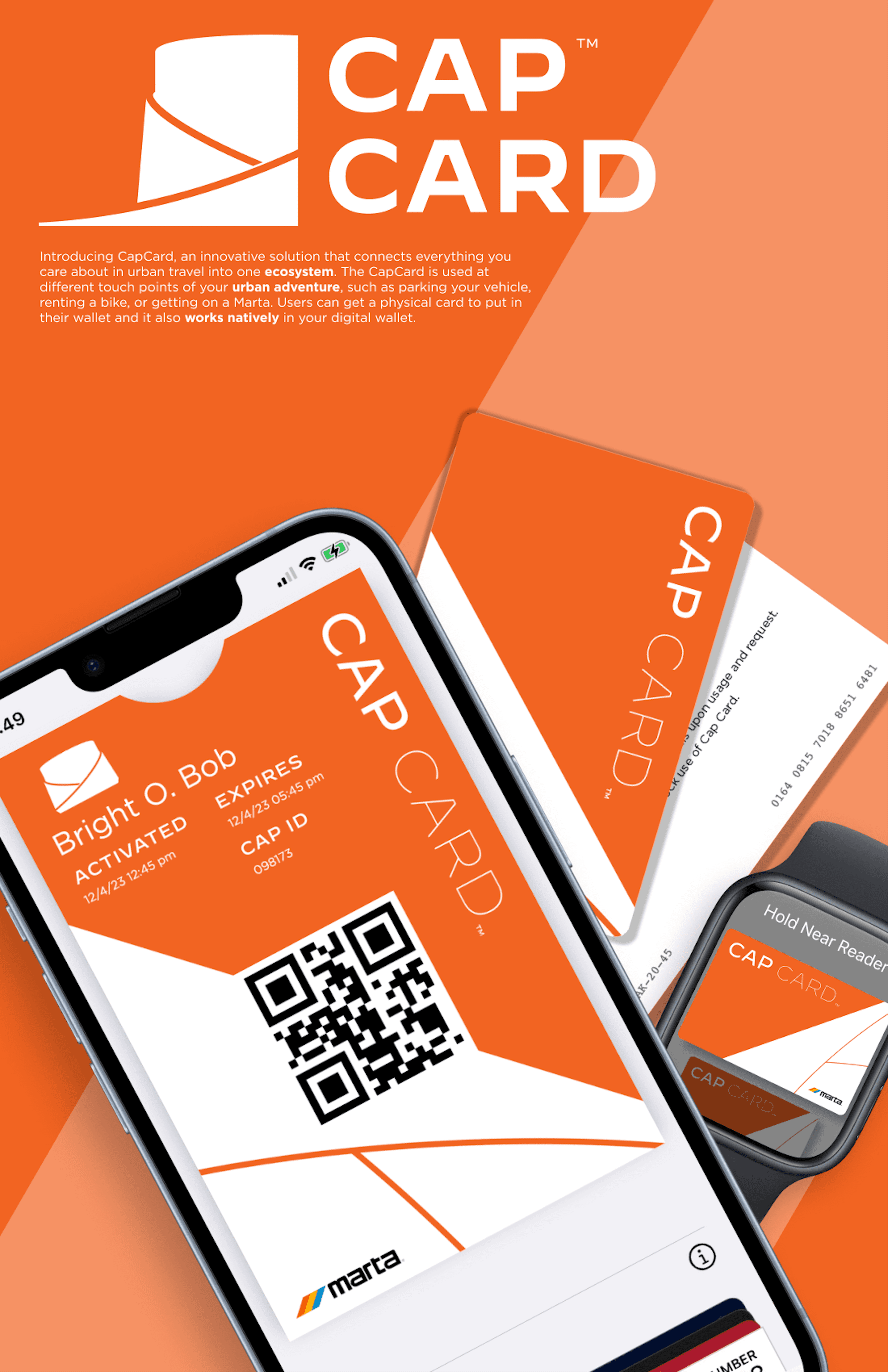
Understand Urban Mobility
What is Urban Mobility? Why should we care?
From liminal to memorable space, simply put, urban mobility is the movement of individuals and groups throughout the urban landscape. From taking the metro to the airport, traversing the Beltline from Ponce City Market to Krog District, or riding electric scooters to and from class, urban mobility is simply how we get around. Our goal, is to discover the essence of urban mobility and consider the future.
Framing the Problem
What can we do about it?
To address this question comprehensively, we recognized the importance of gaining a deeper understanding of the problem space and identifying our target users. The project's initial prompt presented us with a broad scope, which necessitated the need for clarity in defining the project's boundaries. At this stage of the design process, it becomes crucial to establish a clear project scope to determine which aspects of the problem space should be taken into account and which ones should be excluded from consideration.
To achieve this, we initiated the process by conducting secondary research and compiling findings in a glanceable manner. This step involved comparing and benchmarking our project's vision against a variety of external sources and references. By doing so, we aimed to gather valuable insights and knowledge from existing data and experiences, allowing us to make informed decisions about the specific direction and focus of our project within the expansive problem space of urban mobility.
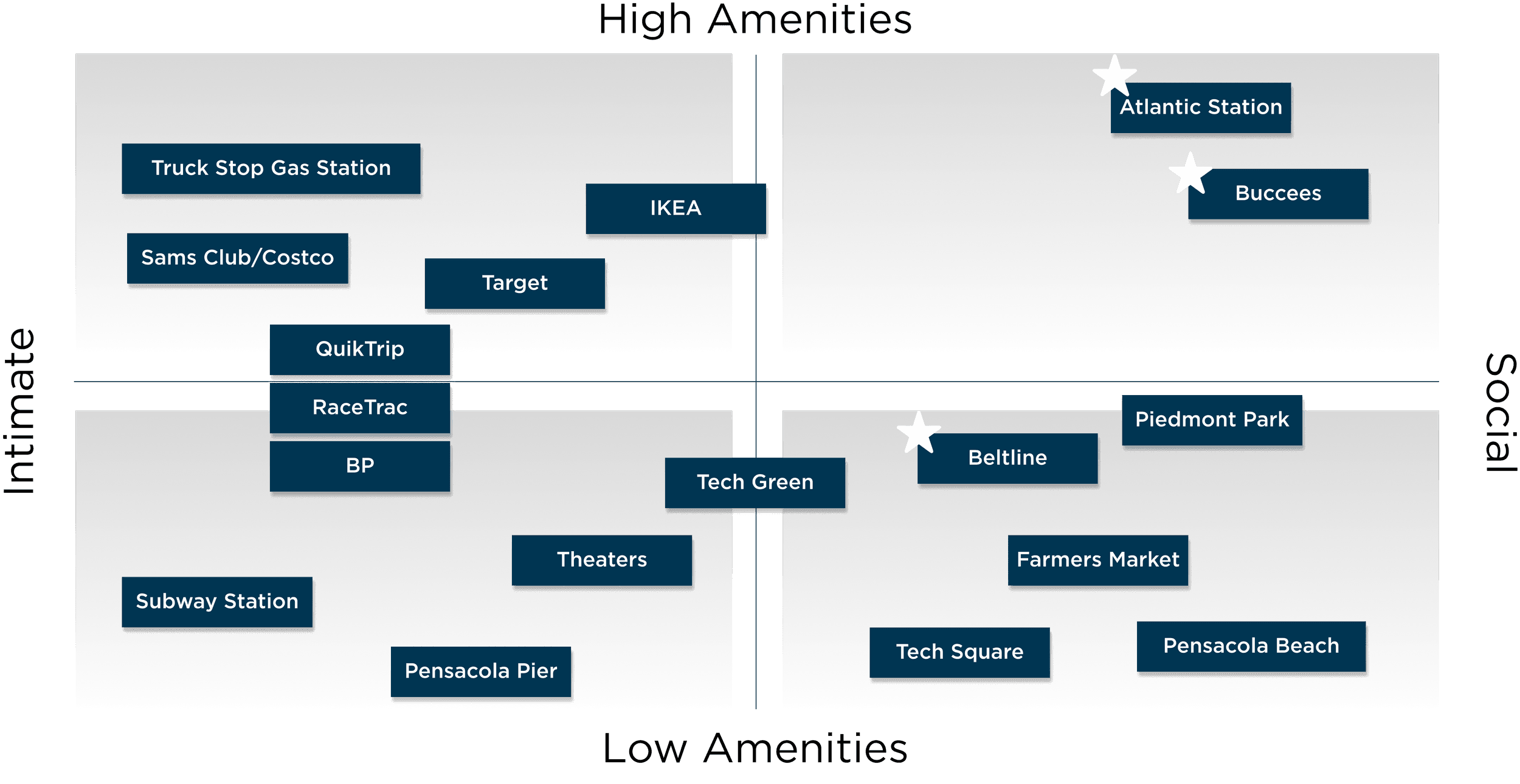
We initially compiled a list of the various spaces where people interact while traveling in urban areas and organized them on a 2x2 matrix. The objective of this competitive analysis method was to gain an initial understanding of the spaces that people find most enjoyable. During this exercise, we delved deeply into three specific areas as our primary focus for conducting further user research: Beltline, Buccees, and Atlantic Station. We paid particular attention to the activities, stakeholders, and artifacts present within these spaces.
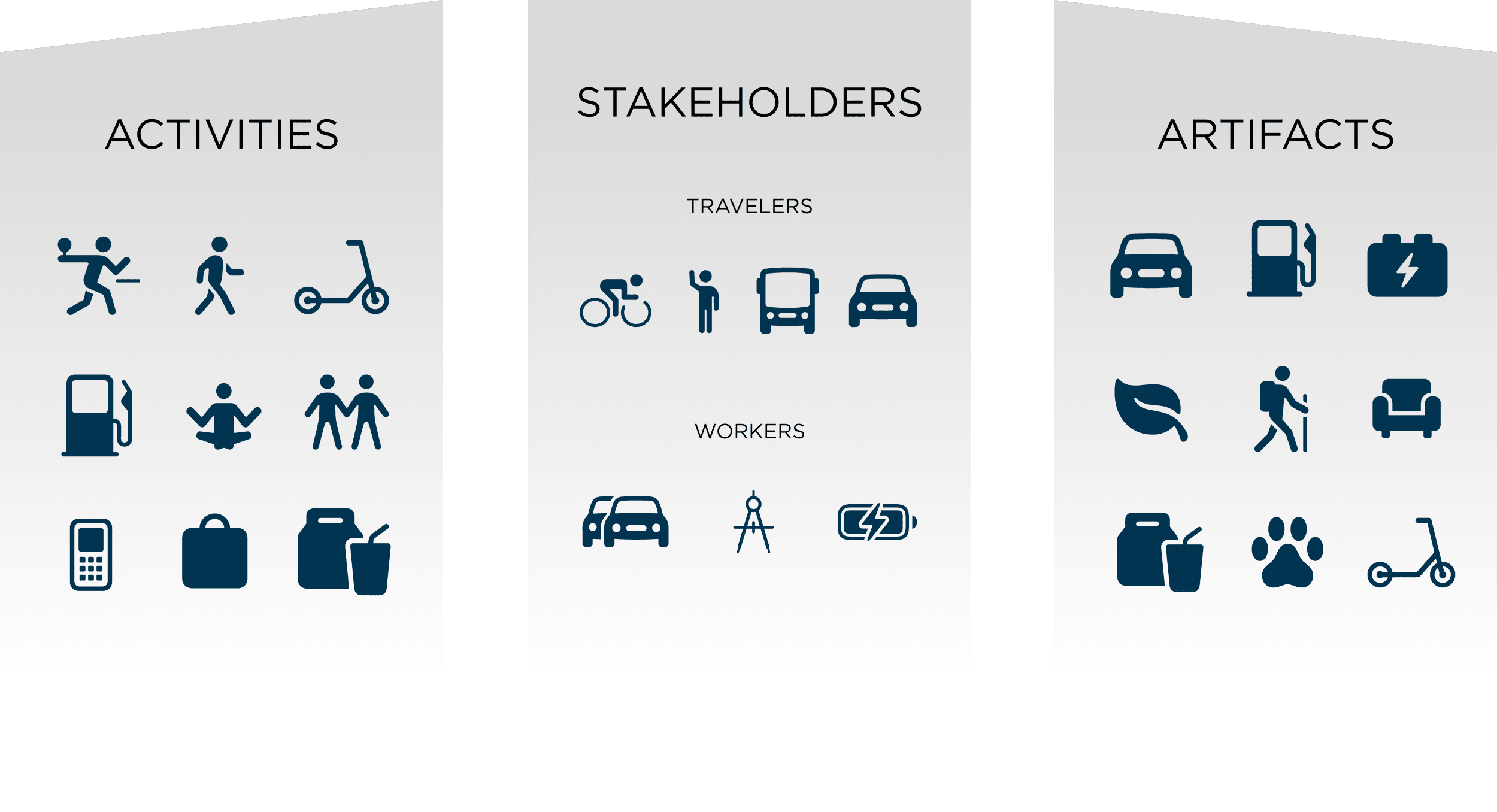
During our observations and interviews, we specifically paid attention to the activities that people were doing, the artifacts that they were using, and the people that they interact with. With these data, we are able to analyze them into research insights.
Need-Finding
What do our users need that the current space is not offering?
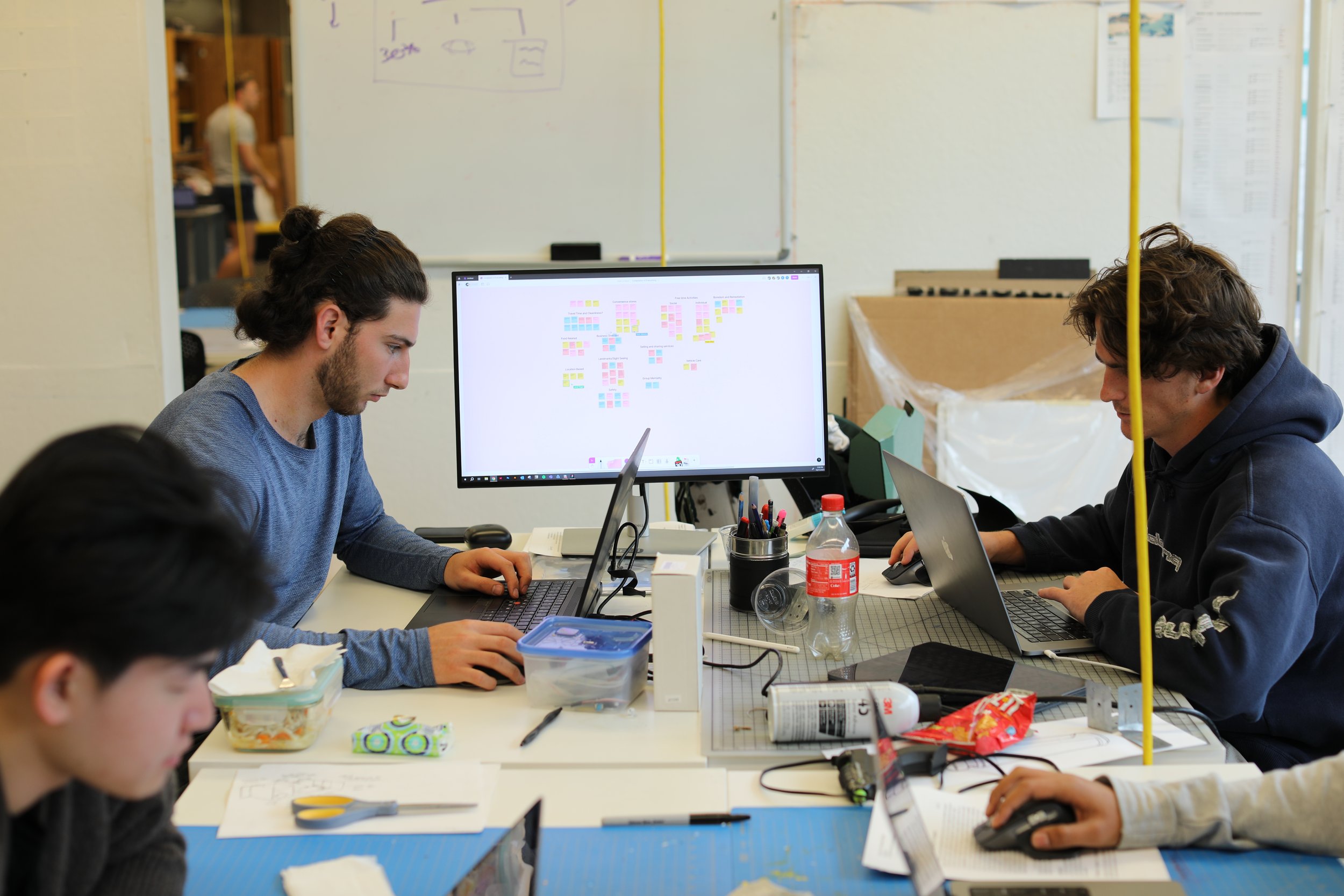
Observational Studies
20+
Qualtrics Survey Responses
123
User Interviews
13
We put what our users feel, says, does, and thinks onto sticky notes in an affinity map to analyze insights.
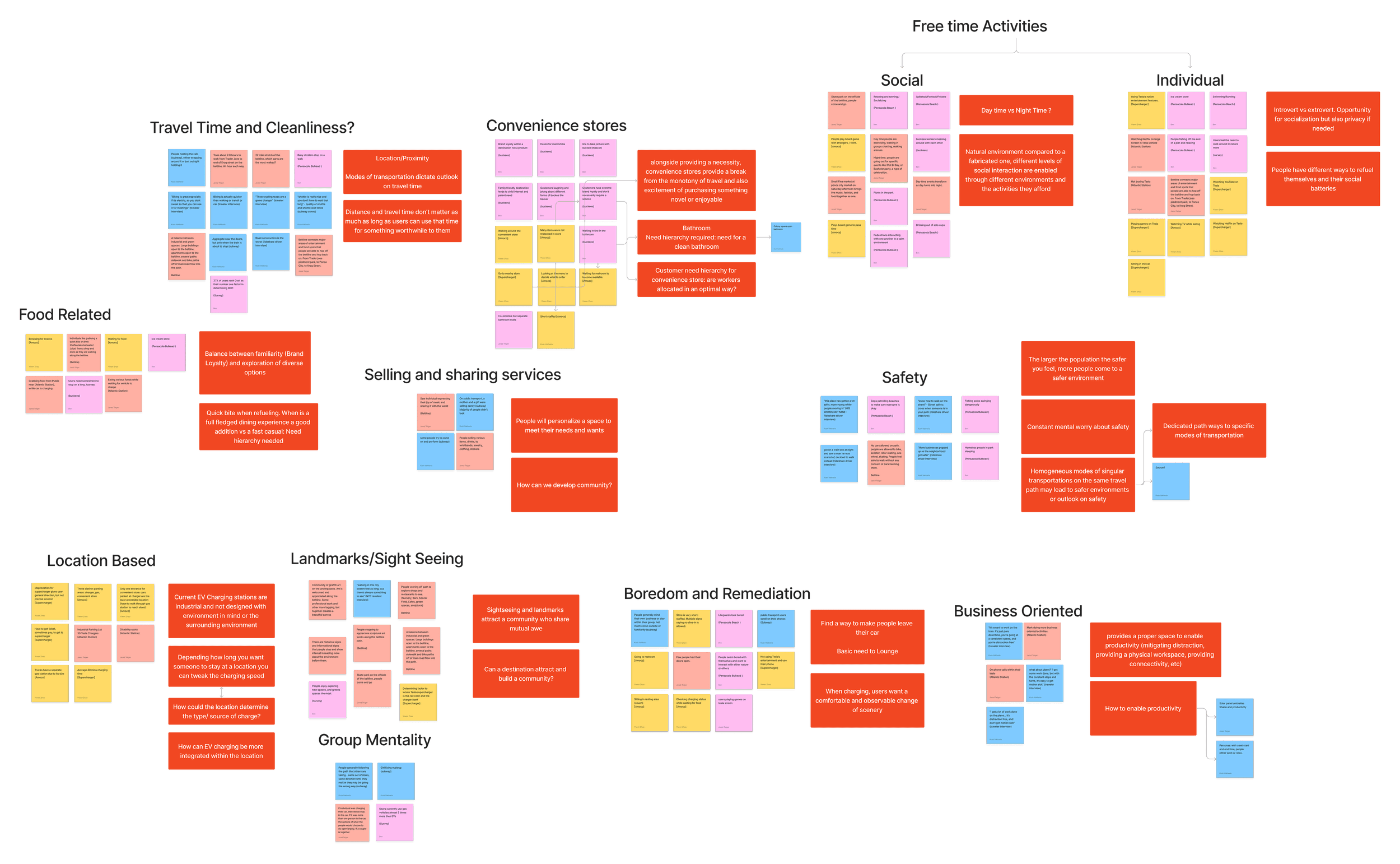
Insight #1
Smarter integration of parking infrastructure and adjustment of idle times allow pedestrians and car drivers alike to properly utilize urban mobility hubs.
Insight #2
The significance of distance and travel time diminishes when individuals can utilize that time in a worthwhile way.
Insight #3
By allowing people the freedom to shape and personalize the space around them, it becomes memorable and facilitates the growth of community.
Concept Development
Envision the Future of Urban Mobility
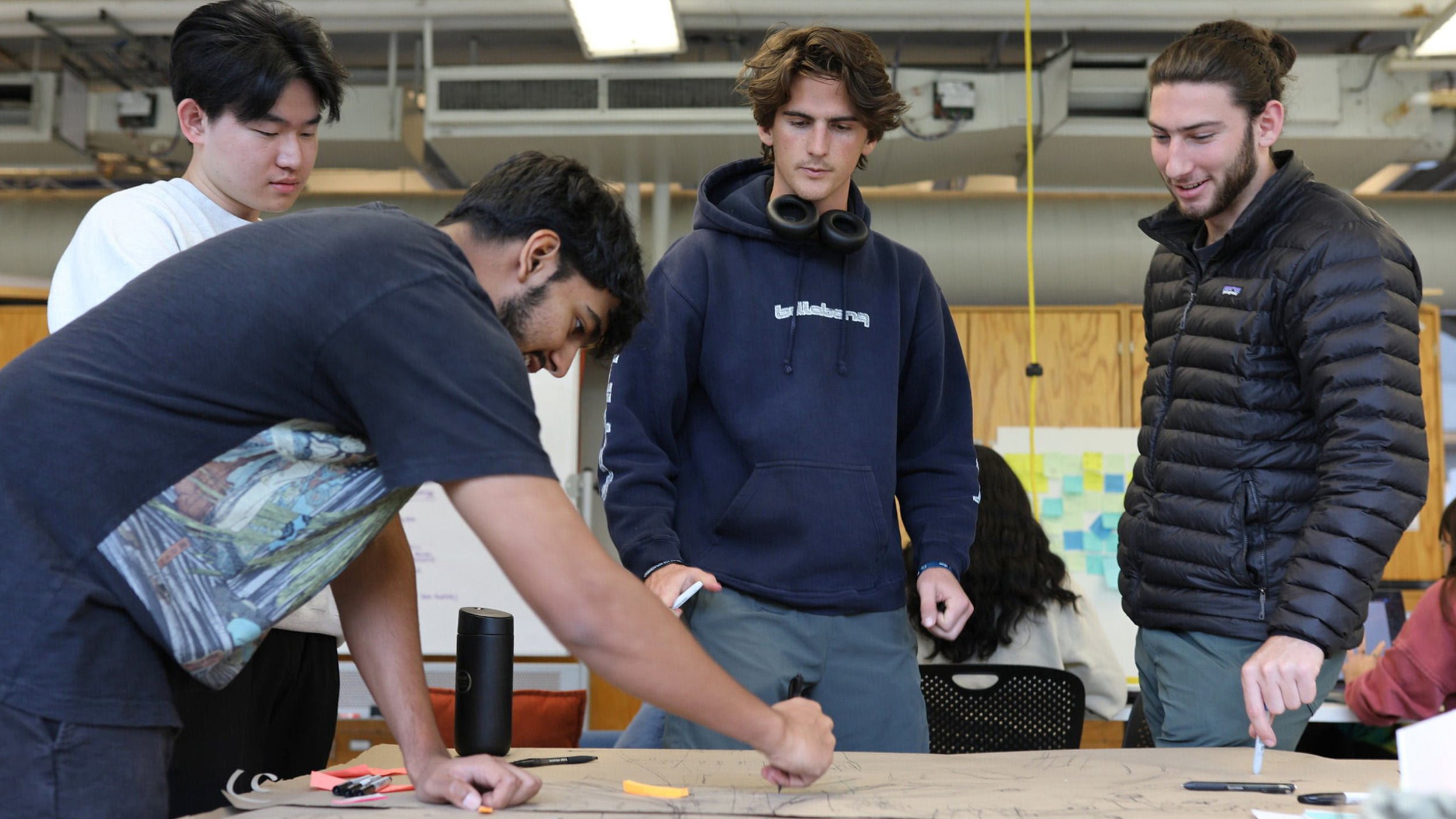
Armed with insights gathered from our user research and a well-defined problem space, we began the ideation phase for concepts aimed at addressing the existing challenges in urban mobility. Each team member embarked on a creative endeavor, sketching a total of 100 thumbnail sketches, each serving as a rapid and rudimentary representation of an idea. In this process, our primary emphasis was on generating a multitude of ideas, prioritizing quantity over the meticulous quality of the sketches. At the end, we ended up with a collection of 400 thumbnail sketches. From this diverse pool of concepts, we meticulously evaluated and selected the most promising 20 ideas for further development. These 20 concepts emerged as potential candidates for shaping our final concept, offering a wide range of possibilities to explore and refine in our pursuit of innovative solutions for urban mobility challenges.

Initial Concept & Features
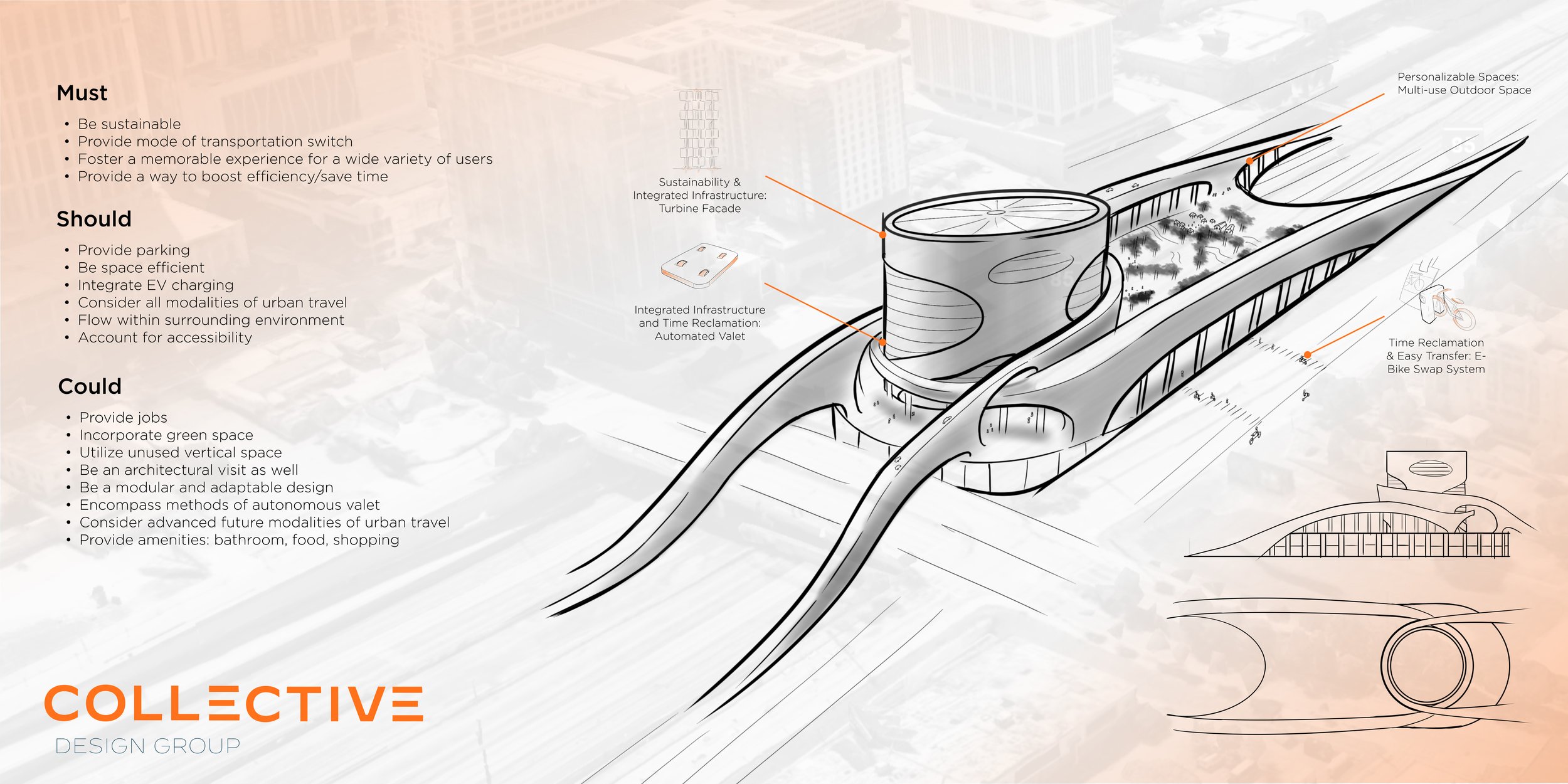
1. Turbine Facade
The turbine facade will be attached to the exterior of the parking structure, supporting a portion, if not all, of the energy needed to make the building operate sustainably. This feature ties back to the research insight, highlighting the need for sustainability in the building as well as smart and efficient use of space.
3. Bike Swap System.
The bike-sharing system in the Capillary offers users a seamless transition from one mode of transportation to another. Users can park their vehicle and then get a bike to ride into the city, all within the same building and ecosystem. This feature allows users to reclaim lost time during travel, offering them a more streamlined traveling experience.
Auto-Valet Usability Test
Diving deep into the design of the Auto-Valet

Research Question
Will auto valet provide an increased sense of satisfaction and effortlessness with the parking experience?
Hypothesis
Auto valet makes the parking experience more streamlined.
The goal for our participants was simple: to park their car and leave the parking structure through the pedestrian exit. The driver should drive his car into “Bay 8,” leave his car, then go out to the kiosk outside to complete the car parking procedures. That is the happy path and, just as expected, none of the participants performed the happy path.
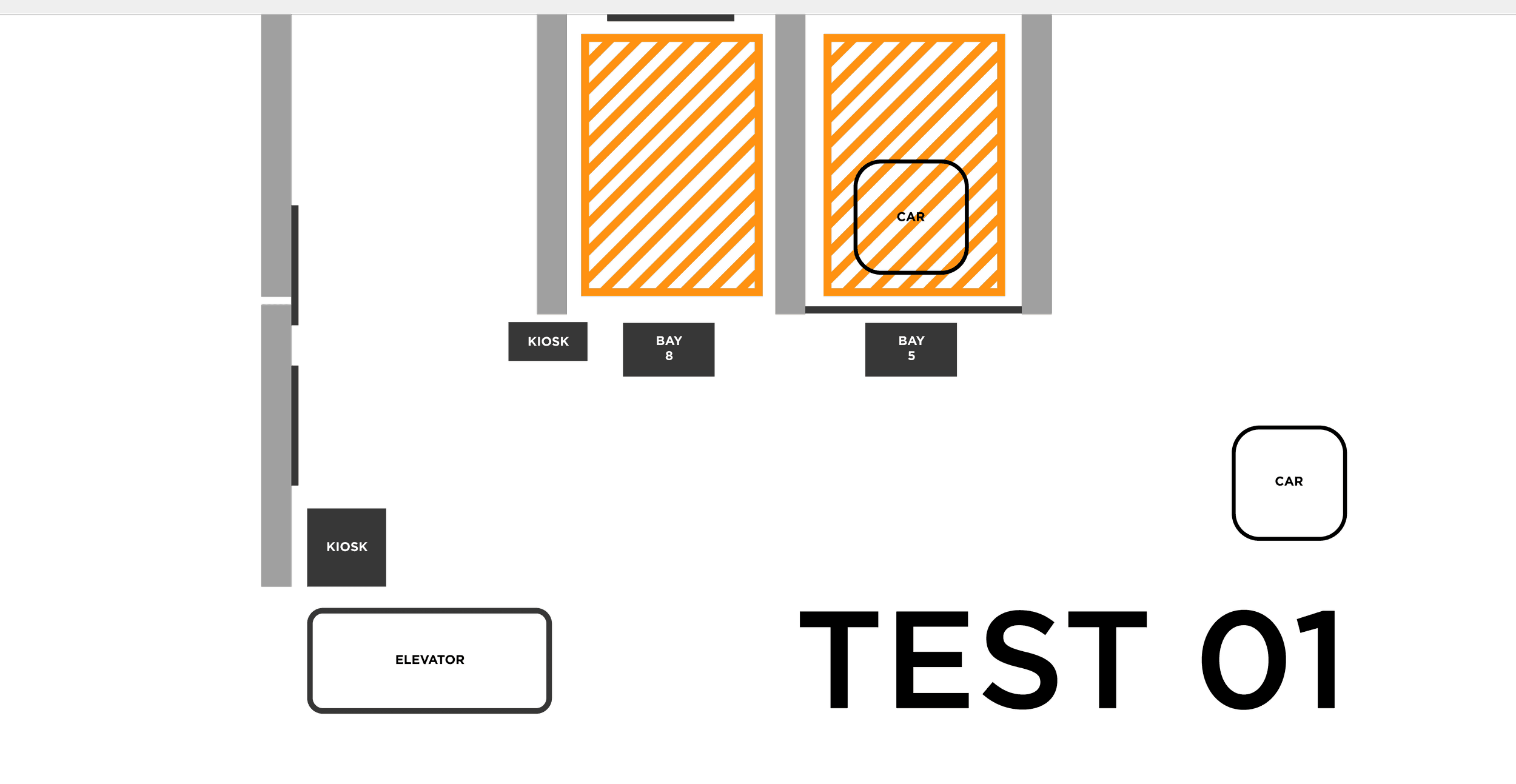
To ensure our concept is as good as we envision it, testing is necessary to confirm that users will interact with the artifacts in the way we anticipate. A major feature we focused on and wanted to test is the Auto-Valet Parking System. As the main entrance point into the Urban Capillary, it's crucial that the user experience—from exiting the highway to entering the Capillary and parking their vehicle—is seamless. For testing our design, we adopted a rapid iterative approach, conducting as many tests as possible until reaching a clear saturation of common results. Then, we revised our test design based on the insights from this saturation and continued testing with the new design until reaching another saturation. This testing methodology allows us to remain lean while maintaining the flexibility to catch test design failures early in the process and to discover key insights about our concepts.
0%
Completion Rate
“I thought it would take my car... you said it was automatic valet. Right?”
User Quote
To address the issues that we found, we have updated the kiosk placement for better way-finding communication. Instead of having the kiosk on the outside of the parking bay, we put them towards the inside and at the same side of the driver’s seat. This placement clearly indicates the intent of the parking procedure where the driver needs to drive into the pay to interact with the kiosk.

What we found is that none of the users chose to drive directly into the parking bay; instead, they drove towards the kiosk outside the bay and interacted with it without leaving their cars. It turns out there is an existing mental model where people prefer to interact with the kiosk before believing they are allowed to park. The placement of the kiosk and signage is paramount in achieving the intended happy path. Previous mental models overruled our intended outcome.
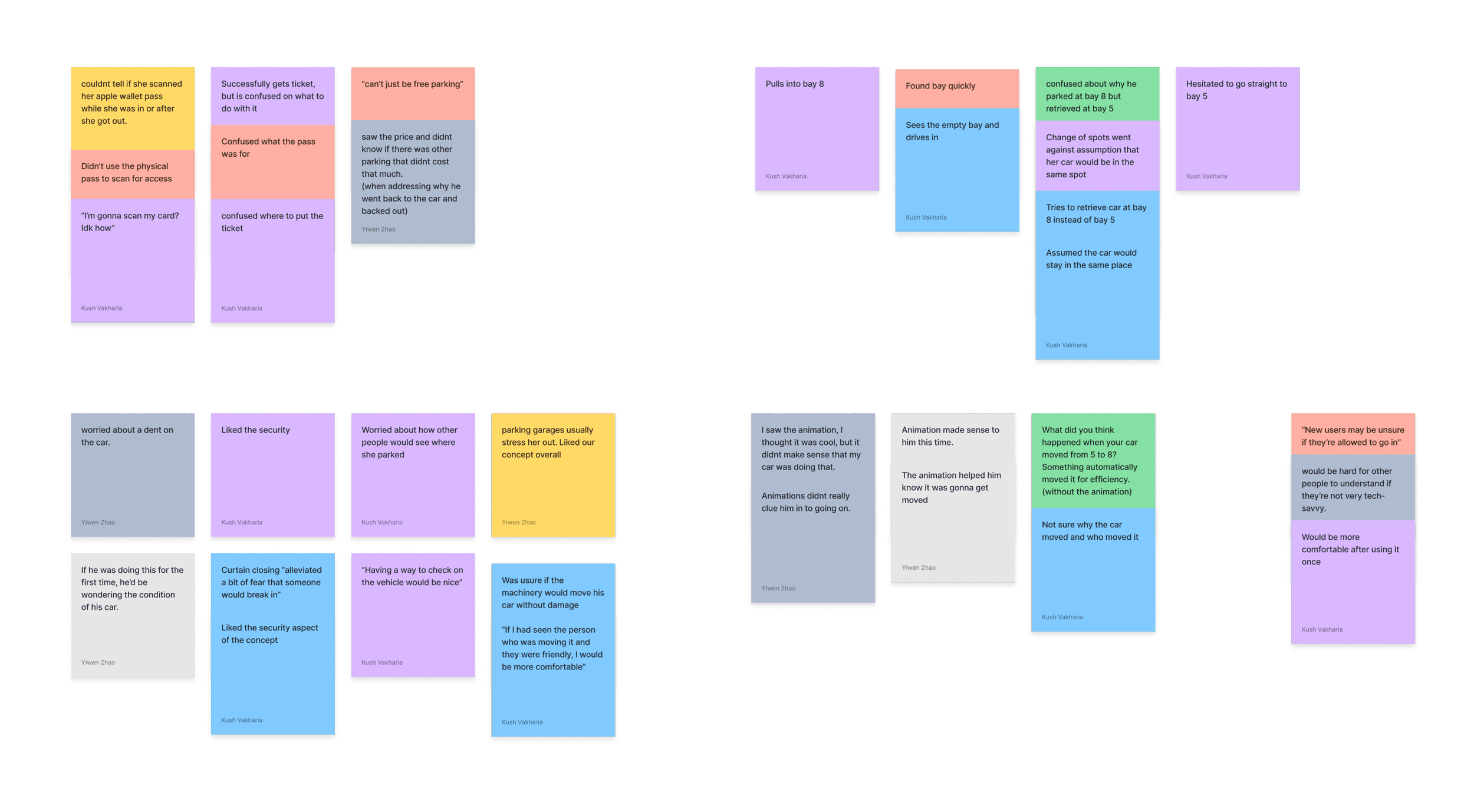
Insight #1
Mental models for car parking structures were challenged while testing automated valet parking.
The current mental models of users differ from how we envision our concept being used. The novelty of the concept should not be entirely unfamiliar to the audience. We need to refine our concepts so that they leverage existing mental models, guiding users naturally and intuitively through the overall journey.
Insight #2
Some users considered safety and security of their car as a bonus but some also worried about how the system would ‘treat’ the car.
One unexpected insight from our participants is their appreciation for the security aspect of our concept. They find the idea of driving into a parking garage, where no one else can access their car afterwards, very compelling. However, they also expressed concerns about potential damage to their car by the auto-valet system. This apprehension stems from a lack of understanding of how the auto-valet parking system operates. Better communication is necessary to alleviate users' concerns regarding the parking structure.
Bike-Share Usability Test
Diving deep into mode of transportation switch
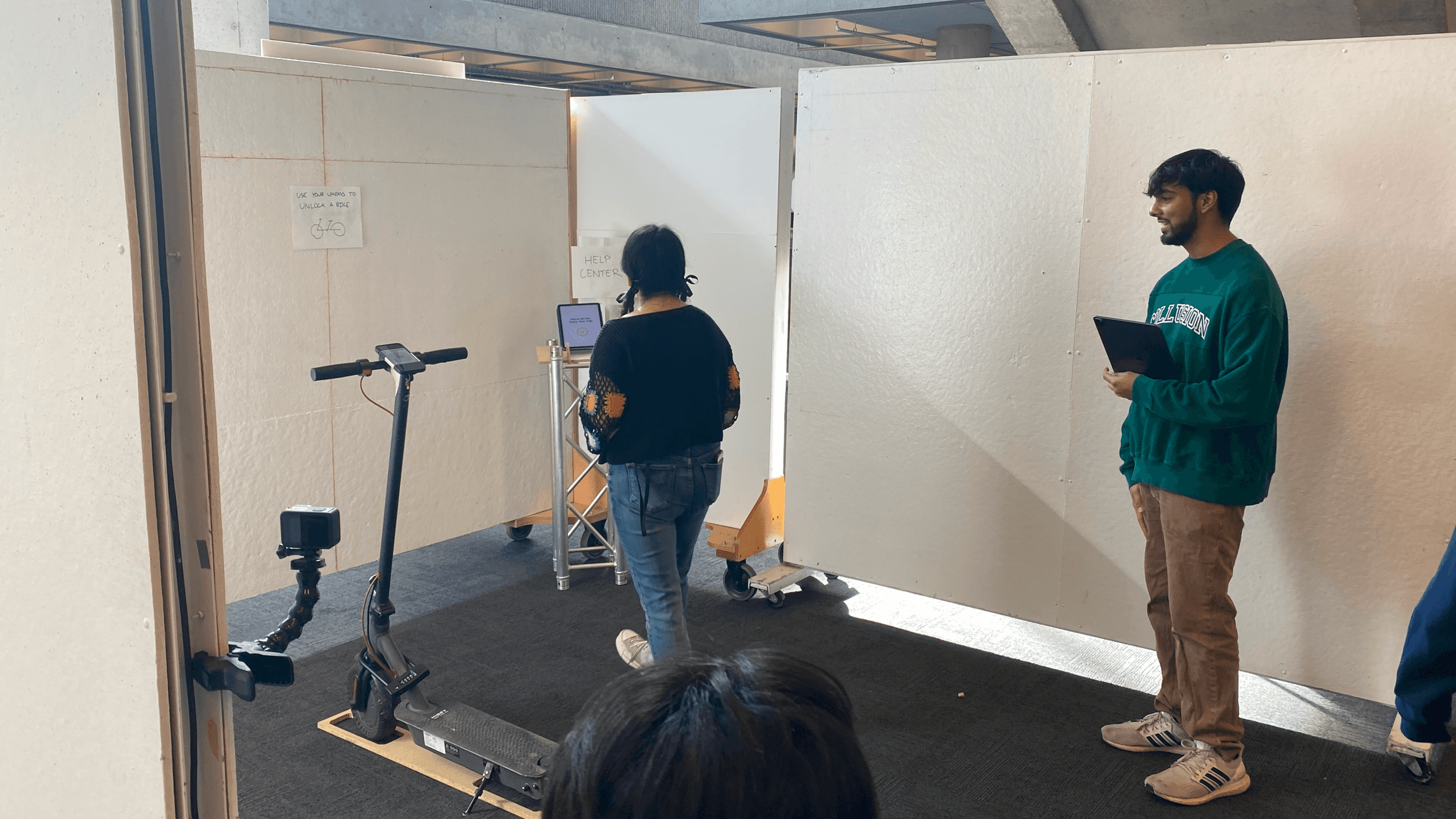
Another feature closely associated with our Urban Capillary is the CapCard ecosystem. Users can utilize the CapCard at various touchpoints during their urban travel experience. It enables them to park their vehicle, rent a bike, access the subway, and more, all with a simple tap. Users have the option of obtaining a physical card for their wallet or integrating the CapCard natively into digital wallets like Apple Wallet. Therefore, it is crucial to validate whether our envisioned interaction, particularly the transition from one mode of transportation to another, is seamless.
Research Question
Hypothesis
Findings Affinity Map
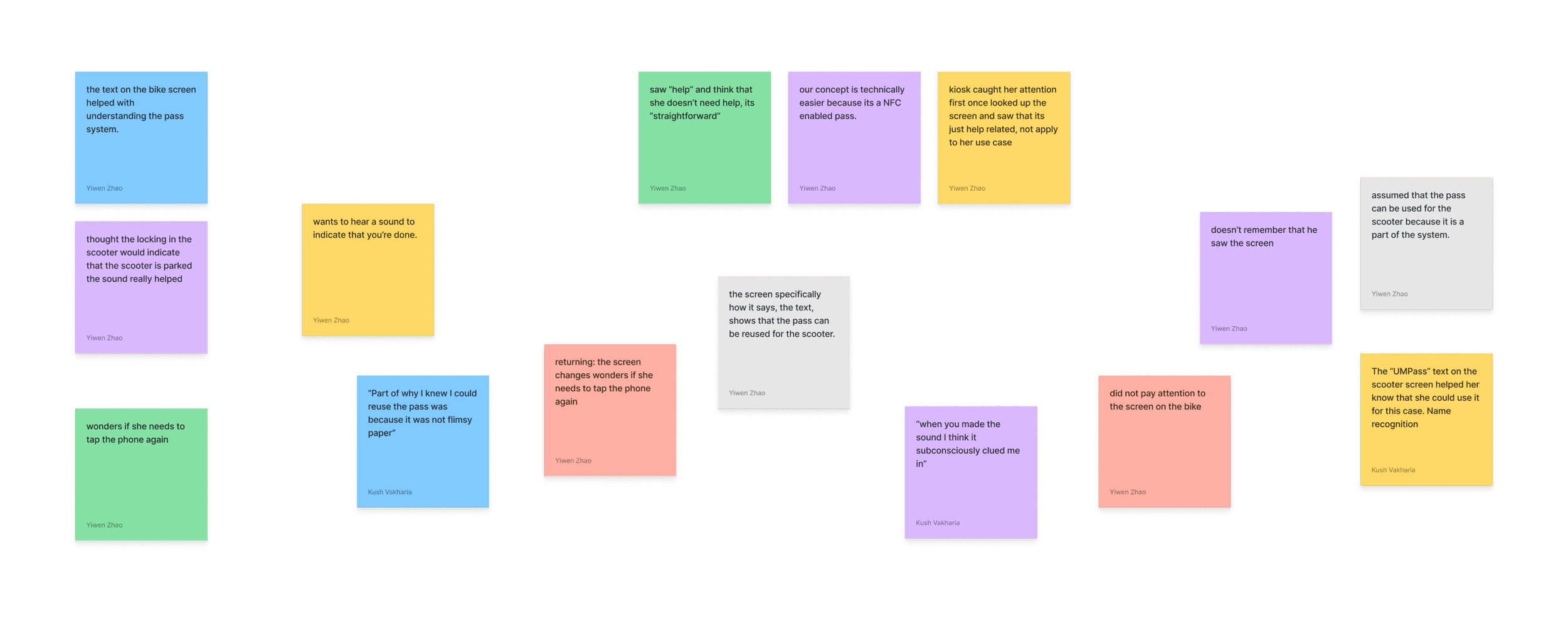
Insight #1
Kiosk labeling and first screen helped people understand whether or not the kiosk services applied to them
Adding a “help desk” sign to the kiosk helped users identify the interaction point. The majority of participants chose not to interact with the help kiosk and instead walked straight to the bike. This signage proved successful, as users indicated that they didn't need help, so it was natural for them to tap the CapCard and check out a bike.
Insight #2
Auditory cues can ease cognitive load and provide feedback to increase the user’s understanding of what’s going on significantly.
The majority of participants had difficulty understanding whether their bike had been successfully locked, despite clear indications on the bike's UI confirming that it was locked. We found that there are simply too many distractions at the moment when a user tries to lock their bike. As a result, the user's attention shifts from the screen to the bike's wheel and the station's locking mechanism.
Insight #3
Users have no problem understanding the pass ecosystem. With better context clues and graphics we can increase this understanding as well.
All our participants understood that the same CapCard used for parking their vehicle should also be used to rent a bike. People had no trouble comprehending the overall CapCard Ecosystem. However, we still see opportunities for improvement, such as redesigning the card itself to better communicate the ecosystem.
Final Design
Introducing the Urban Capillary
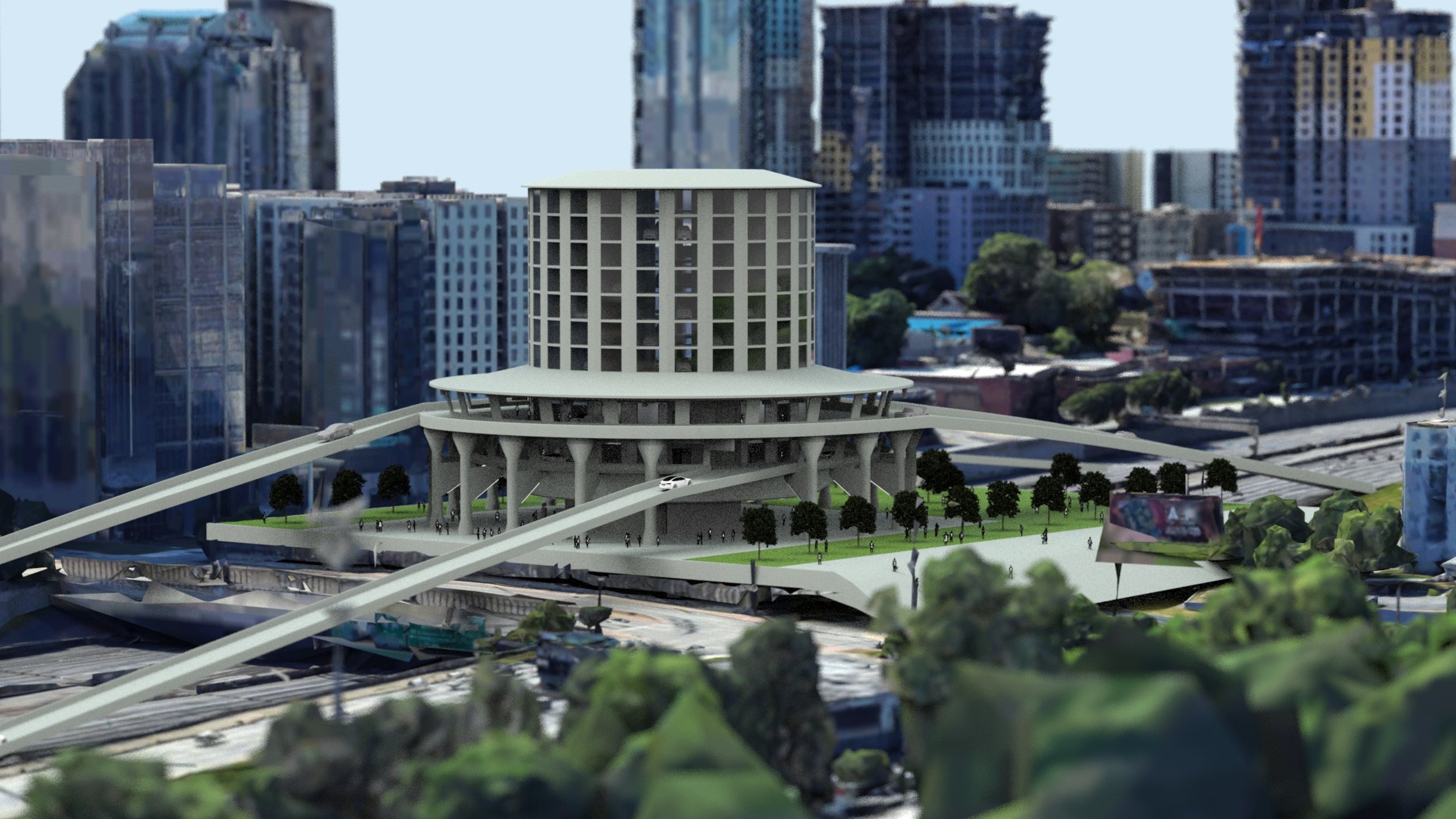
So Here Is Our Concept:
User Journey
